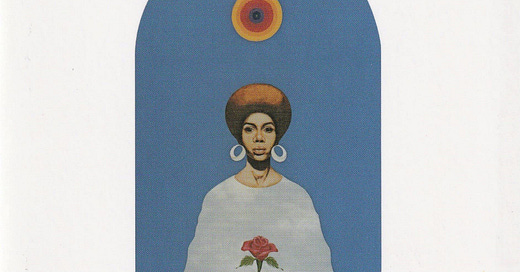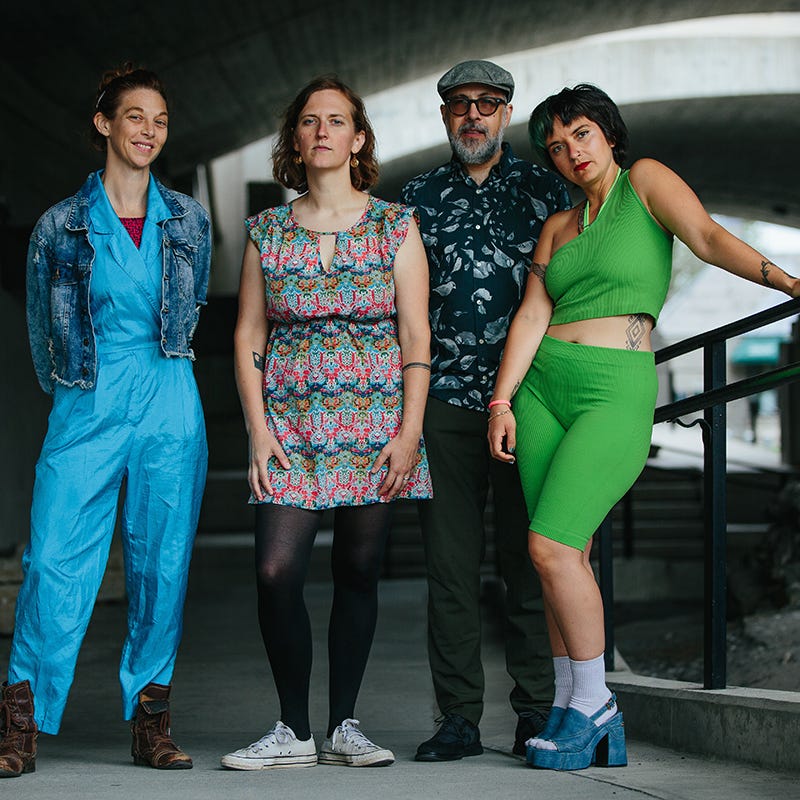Luis Gasca’s For Those Who Chant is available on CD once again, and you should buy it ASAP. (I got mine on eBay.) This is an album I’ve been obsessed with for years, and had despaired of ever owning in physical format. Before this, there was only one CD edition, a limited-run 2006 version from Japan that Discogs sellers want more than $60 for. But now the South Korean reissue label Big Pink has put it out and, at least for the moment, it’s fairly easy to get your hands on a copy, so do it, because this is one of those mind-warping little gems that once upon a time, record store clerks would pass you with an awed murmur… “Yeah, but have you heard this one? Man, it’s the shit…”
Gasca, who’s still alive, is a trumpeter born in Houston in 1940, who did some early work in Woody Herman’s band, then recorded with Mongo Santamaria and played on sessions with Janis Joplin, Van Morrison, and Cal Tjader, as well as the also-ran rock bands Mother Earth and Gator Creek. He’s on the soundtrack to Alejandro Jodorowsky’s El Topo, too. He made his solo debut for Atlantic in 1969. The Little Giant is an amped-up Latin-soul-jazz album, kind of proto-salsa, with some high-level players — saxophonist Joe Henderson, flutist Hubert Laws, Herbie Hancock on piano, bassist Richard Davis, drummers Bernard Purdie and Mickey Roker, Santamaria on percussion. But in 1971 or so, he drifted into Carlos Santana’s orbit, and that’s when For Those Who Chant started to come together.
Gasca played on one track, “Para los Rumberos,” on Santana III, then joined Carlos’s brother Jorge Santana’s band Malo and was all over their self-titled debut. Then he went back to Carlos for the one-off all-star band he and drummer/vocalist Buddy Miles put together for the Sunshine ’72 festival, held on New Year’s Day inside Diamond Head Crater in Honolulu, Hawaii. Their performance was recorded for the album Carlos Santana & Buddy Miles! Live!, and if you’ve never heard that, be prepared for a shock. Gasca and saxophonist/flutist Hadley Caliman lay down some scorching free jazz horns in between the amp-frying riffs and drum thunder. It’s heavy.
I’ve said it a thousand times in many places: 1969-75 was a peak era for music. Heights were scaled which will never be reached again. Experimentalism and virtuosity and fraternity and serious drugs all combined to convince jazz and rock and Latin and funk musicians that they had more in common than not, and that if they worked in the liminal zones between their respective genres, they could make the most amazing music the world had ever known…and they did.
The personnel on For Those Who Chant, which was recorded in San Francisco in late 1971, is incredible. Gasca on trumpet and flugelhorn. Joe Henderson on tenor sax. Hadley Caliman on flute. Carlos Santana and Neal Schon on guitars. George Cables, Mark Levine, and Gregg Rolie on electric pianos. Richard Kermode on organ. Jose “Chepito” Areas on vibes. Stanley Clarke on bass. Michael Shrieve and Lenny White on drums. Mike Carabello and Victor Pantoja on congas. Rico Reyes, Garnette Mims, Joan MacGregor, and Snooky Flowers on percussion. Carmelo Garcia and Coke Escovedo on timbales.
It’s just 40 minutes long, with four tracks: “Street Dude,” “La Raza,” “Spanish Gypsy,” and “Little Mama.” And those titles might lead you to believe you’re just gonna get warmed-over Santana, Malo and maybe War, with horn solos instead of vocals. But an assemblage of players this talented is never gonna be satisfied with just doing the expected. Yeah, there’s a groove to start. But by the five-minute mark of the nearly 12-minute “Street Dude,” things have gotten seriously drifty. It kind of reminds me of On the Corner (which wouldn’t be recorded until six months later) in the way there’s always some tiny, surprising rhythmic thing happening — an extra flourish from the timbales, a sudden turnaround from one of the two drummers — to draw your attention like a fish popping its back fin out of a river just long enough to catch the light before vanishing again. There are multiple layers of keyboard at all times, in that In a Silent Way/Bitches Brew/Caravanserai style, and in the piece’s final two minutes, you get Afro-Latin chanting that’s like the Art Ensemble of Chicago riffing on a Santeria ritual.
Things get overtly Bitches Brew-y on “La Raza,” but Gasca isn’t imitating Miles Davis; he’s doing his own thing, particularly when it comes to emitting long streams of piercing high notes. “Spanish Gypsy,” the longest track on the album at 15:09, features some of his most thrilling outbursts, and some red-hot guitar from Santana as well. And it all ends with the hard-charging highway-star anthem “Little Mama,” which fades out on a drum solo, because of course it does. 1972, man.
I love this record so much, and I am so glad it’s back in print on CD. (It’s not on streaming services, either.) Get yourself one.
And now…a video premiere! Remember those? Drummer John Hollenbeck has formed a new band, George, with saxophonist Anna Webber, keyboardist/vocalist Chiquita Magic, and saxophonist/keyboardist/vocalist Aurora Nealand. Their album Letters to George will be out at the end of this month on Out Of Your Head; you can pre-order it on Bandcamp. It’s a kind of mutant cyber-funk with jazz and improv elements, centering female voices; it kinda reminds me of Anteloper, but it also kinda reminds me of Chromeo, which rules. Here’s their video for “Iceman,” the last track on the album, about which Hollenbeck says, “Dedicated to George Gervin, the Basketball Hall of Fame legend. The fast-paced tempo in basketball is translated to this tune. A fun groove for exercising, moving, and dancing!”
A couple more things before I go: here’s a good piece about a song I fucking hate. (Just so we’re clear, it’s not just about its inexplicable pop-cultural half-life — I hated it when it was new, too. But the piece is interesting.)
And if you’re not already listening to Portuguese trumpeter Susana Santos Silva, you really should be. I interviewed her for Bandcamp Daily, and we discussed a bunch of her recent releases, but there are many, many more.
That’s it for now. See you next week!





